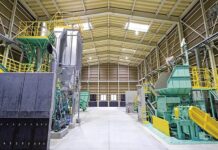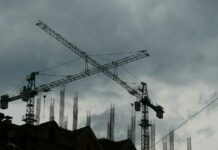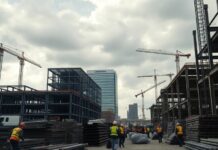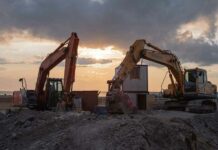CO2 emissions from construction have indeed hit a new scale, thereby leaving the sector off track when it comes to decarbonizing by 2050, as per a recent UN report.
However, there are a small but reasonable number of countries that have implemented or are preparing to bring about changes in their building codes so as to limit the emissions that are created by infrastructure not just while it is being used but also during the construction phase.
In some cases, the new or what we can term planned regulations extended to the carbon that’s embodied in the building materials, and the emissions have started transmitting them.
With as much as one-fourth of building-related emissions anticipated to come from the construction phase, once the embodied carbon material gets included, these early adopter nations shall stand as pillars of a practise that has been urged by the UN to the governments to embrace far more widely these efforts that result in the limitation of global warming to a certain extent.
At Aalborg University in Denmark, Professor of the Research Group on Sustainability, Harpa Birgisdottir, stated that the evidence from the whole life cycle of the carbon evaluation of the buildings suggests that there is an enhanced significance given to the incorporation of carbon in the building material as well as components. So as to lessen the embedded carbon in the materials, new arrangements need to be put forth with limit values that are based on the entire carbon life assessment.
Professor Harpa adds that one must begin the introduction of requirements across the globe that embrace embodied carbon, which are either already agreed upon or implemented in France, the Netherlands, and Denmark, and planned in Sweden as well as Denmark. He also emphasises the significance of consistently setting the limit on carbon emissions so as to minimise the gap between emissions today that are mostly overtaking the budgets laid out under the Paris agreement.
Apparently, at the beginning of the year, Denmark became the first country from the Nordic region to set itself a requirement in building codes so as to document the environmental impact of new construction and buildings throughout their entire life cycle. Until recently, the environmental legislation in the country targeted the energy consumed in the building only when it was in use.
In addition to the other Nordic countries, Finland is moving towards carbon neutrality by 2035, which is pretty much ahead of the EU’s goal of attaining net zero by 2050. Finland, apparently, is coming up with legislation that is going to involve carbon limits when it comes to various building types by 2025.
As a matter of fact, France has already put forth regulations that put in place the newly-based developments known as RE2020, which go on to govern functional as well as embodied carbon. They happen to be based on a dynamic life cycle analysis that goes on to weight future emissions that are much lower than the emissions that are taking place presently.
The Netherlands, on the other hand, is believed to be the first nation to have put forth limits on embodied carbon when it comes to new buildings through regulations. Notably, the permissions for all new kinds of construction, be it non-residential or residential, have to meet the Nearly Energy Neutral Buildings standard.





























